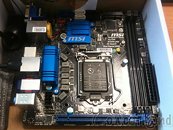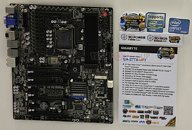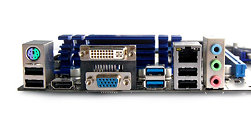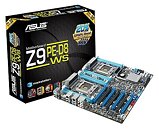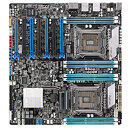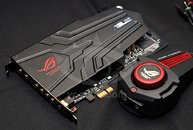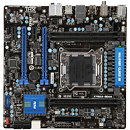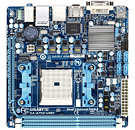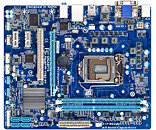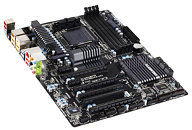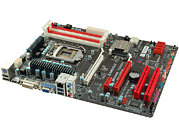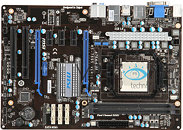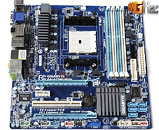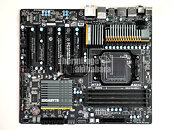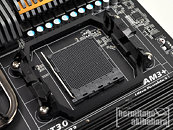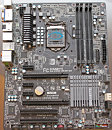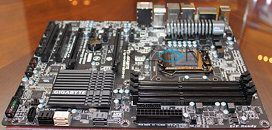
MSI Z77IA-E53 Mini-ITX Motherboard Pictured
MSI is working on a new socket LGA1155 motherboard based on the Intel Z77 Express chipset, and some of its first pictures were leaked to the web. The Z77IA-E53 from MSI is designed not only to provide a feature-rich board in its tiny footprint, but also one that's fit for CPU overclocking. The LGA1155 socket is powered by a 7-phase VRM that uses DrMOS and tantalum capacitors. The board draws power from 24-pin ATX and 8-pin EPS power connectors. The processor is wired to two DDR3 DIMM slots, supporting up to 16 GB of dual-channel DDR3 memory, and a PCI-Express 3.0 x16 slot.
To make the most out of the limited board area, MSI stuck to the feature-set of the Z77 PCH. Storage connectivity includes two SATA 6 Gb/s, two SATA 3 Gb/s, an eSATA 3 Gb/s, and an mSATA 3 Gb/s. The mSATA slot shares its board space with an mPCIe 5 GT/s slot, which is stacked on top of it. The board provides four USB 3.0 ports, two on the rear panel, two via headers, all of which are driven by the Z77 PCH. Display outputs include D-Sub and HDMI. Other connectivity includes 6-channel HD audio (Realtek ALC892), gigabit Ethernet, and Bluetooth. The board is driven by UEFI BIOS with ClickBIOS II setup program. More details are awaited.
To make the most out of the limited board area, MSI stuck to the feature-set of the Z77 PCH. Storage connectivity includes two SATA 6 Gb/s, two SATA 3 Gb/s, an eSATA 3 Gb/s, and an mSATA 3 Gb/s. The mSATA slot shares its board space with an mPCIe 5 GT/s slot, which is stacked on top of it. The board provides four USB 3.0 ports, two on the rear panel, two via headers, all of which are driven by the Z77 PCH. Display outputs include D-Sub and HDMI. Other connectivity includes 6-channel HD audio (Realtek ALC892), gigabit Ethernet, and Bluetooth. The board is driven by UEFI BIOS with ClickBIOS II setup program. More details are awaited.
